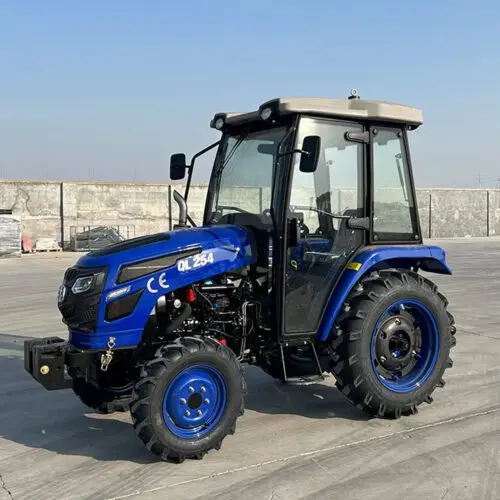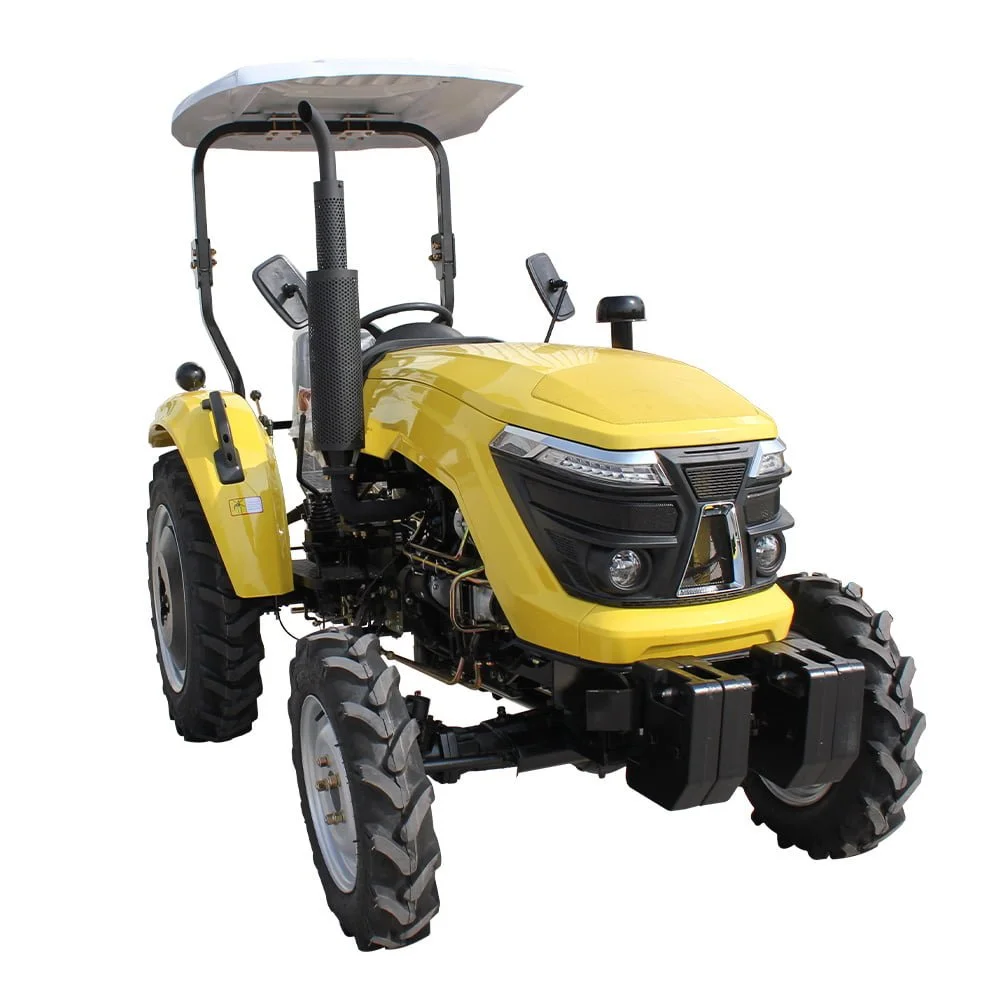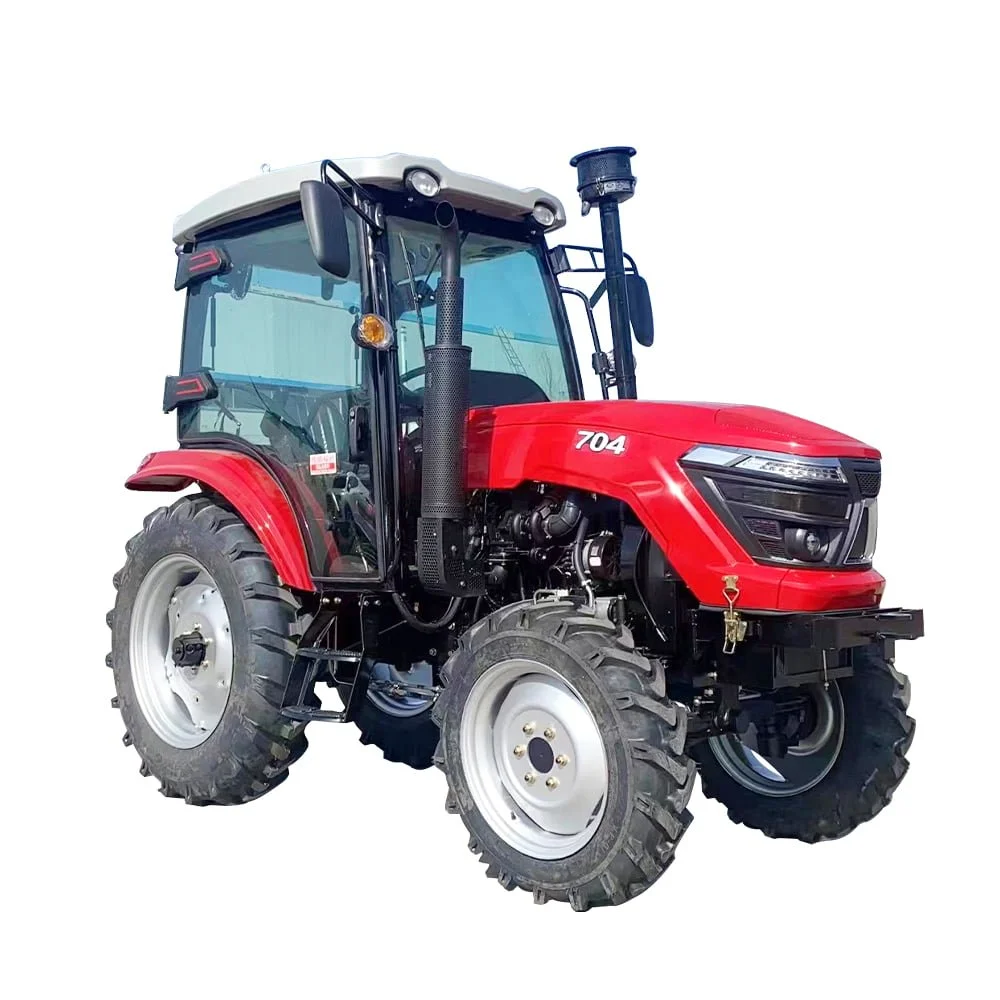E-mail: alamat email qilumachinery.com WhatsApp: 8618266768780
Manfaat Traktor: Meningkatkan Efisiensi di Lapangan
Selamat Datang di blog saya!
Sebelum kita menyelami kontennya, saya ingin Anda bergabung dengan saya di platform media sosial tempat saya berbagi lebih banyak wawasan, berinteraksi dengan komunitas, dan mengunggah berita terkini. Berikut cara Anda dapat terhubung dengan saya:
Indonesia: https://www.facebook.com/profile.php?id=100072217509763
LinkedIn: https://www.linkedin.com/company/74949059/admin/dashboard/
YouTube:https://www.youtube.com/@tractormanufacturer-lc5qz
TikTok: https://www.tiktok.com/@tractormanufacturer
Sekarang, mari kita mulai perjalanan kita bersama. Saya harap Anda menemukan konten di sini yang berwawasan, menarik, dan berharga.
Daftar isi
Perkenalan

Modern agriculture has undergone a significant transformation with the introduction of mechanized equipment, and tractors stand at the forefront of this revolution. These powerful machines have become indispensable assets for farmers worldwide, offering numerous tractor benefits that enhance productivity and streamline operations. From small family farms to large agricultural enterprises, the adoption of tractors has fundamentally changed how we cultivate land and manage crops.
The tractor benefits extend across all aspects of farming operations, providing solutions that address labor shortages, improve precision, and increase overall efficiency. This comprehensive examination will explore the multifaceted advantages of tractor use, analyze different types of tractors and their specific applications, and look ahead to emerging technologies that promise to further revolutionize agricultural practices.
How Traktor Revolutionize Farming Efficiency

Transforming Productivity Through Mechanization
The primary tractor benefit lies in its ability to dramatically increase farming efficiency. A single tractor can accomplish in hours what would take days or weeks of manual labor. This mechanization advantage allows farmers to:
- Complete time-sensitive operations during optimal weather windows
- Manage larger acreages with the same workforce
- Respond more effectively to market demands and seasonal pressures
Modern tractors achieve these efficiency gains through advanced engineering that maximizes power output while minimizing fuel consumption and operational downtime.
Labor Optimization and Cost Reduction
One of the most significant tractor benefits is the reduction in labor requirements. In an era of agricultural labor shortages and rising wage costs, tractors provide a reliable alternative to manual labor by:
- Performing tasks that would otherwise require multiple workers
- Operating for extended periods without fatigue
- Reducing dependence on seasonal labor availability
This labor efficiency translates directly to improved profitability, as farmers can allocate their human resources to more specialized tasks that require human judgment and expertise.
Precision Agriculture Capabilities
Contemporary tractors serve as the foundation for precision farming techniques, offering tractor benefits that go beyond simple mechanization. Equipped with advanced technologies, modern tractors enable:
- Sub-inch accuracy in field operations through GPS guidance systems
- Variable-rate application of inputs based on real-time field data
- Automated documentation of field operations for improved record-keeping
These precision capabilities result in optimized input usage, reduced environmental impact, and improved crop performance across entire fields.
Key Traktor Benefits Across Farming Operations


Soil Preparation and Land Management
The tractor benefits in soil preparation are particularly noteworthy, as proper tillage sets the foundation for successful crop production. Tractors equipped with modern implements can:
- Achieve consistent tillage depth across varying soil conditions
- Incorporate crop residues effectively while minimizing soil disturbance
- Prepare seedbeds with optimal soil structure for germination
These capabilities lead to improved water infiltration, better root development, and ultimately higher crop yields.
Planting and Crop Establishment
During the critical planting phase, tractor benefits manifest in several important ways:
- Precise seed placement at consistent depths and spacing
- Accurate fertilizer placement relative to seed position
- Ability to plant in optimal soil conditions regardless of field size
The result is more uniform crop emergence, reduced competition between plants, and maximized yield potential across the entire field.
Harvest Operations and Post-Harvest Handling
The tractor benefits during harvest are equally significant, particularly when considering:
- Reduced crop losses compared to manual harvesting methods
- Gentle handling of sensitive crops to preserve quality
- Efficient transport from field to storage facilities
Modern tractor-harvester combinations can adapt to varying crop conditions, adjusting settings automatically to maintain optimal harvesting parameters throughout the day.
Comparative Analysis of Tractor Types and Their Applications
Understanding the different categories of tractors helps farmers select equipment that delivers maximum tractor benefits for their specific operations. The following table outlines key characteristics and optimal uses for various tractor classifications:
| Jenis Traktor | Power Range | Fitur Utama | Aplikasi Utama |
|---|---|---|---|
| Traktor Serbaguna | 45-140 HP | Versatile three-point hitch, mid-range PTO | General farming, loader work, small hay operations |
| Traktor Tanaman Baris | 100-400 HP | Adjustable wheel spacing, high clearance | Large-scale crop production, precision farming |
| Traktor Kompak | 20-50HP | Maneuverable size, multi-functional | Small farms, orchards, livestock operations |
| Traktor Khusus | Bervariasi | Narrow profile, low center of gravity | Vineyards, hop yards, berry production |
| Traktor Jalur | 150-600 HP | Low ground pressure, high traction | Wet soils, large-scale tillage, earthmoving |
This spectrum of tractor types ensures that farmers can find equipment that delivers optimal tractor benefits for their specific soil types, crop mix, and farm size.
Environmental and Economic Advantages of Modern Tractors
Praktik Pertanian Berkelanjutan
Modern tractors contribute significantly to environmentally responsible agriculture through:
- Reduced soil compaction via improved weight distribution
- Precise application of inputs to minimize runoff
- Compatibility with conservation tillage systems
These tractor benefits align with growing demands for sustainable food production while maintaining farm profitability.
Energy Efficiency Improvements
Recent advancements in tractor design have led to substantial gains in fuel efficiency, including:
- Advanced engine technologies that optimize power output
- Transmission systems that match power delivery to load requirements
- Hydraulic systems that minimize energy losses
These improvements reduce both operating costs and the carbon footprint of agricultural operations.
Long-Term Investment Value
The economic tractor benefits extend beyond immediate productivity gains to include:
- Extended equipment life through improved durability
- Higher residual values for well-maintained machines
- Reduced maintenance requirements through better engineering
These factors combine to improve the total cost of ownership over the equipment’s lifespan.
Emerging Technologies in Tractor Development

Autonomous Operation Systems
The next generation of tractor benefits includes driverless operation through:
- Advanced obstacle detection and avoidance systems
- Cloud-based fleet management capabilities
- Self-diagnostic and prognostic maintenance features
These developments promise to address labor challenges while improving operational efficiency.
Alternative Power Systems
Manufacturers are exploring new power sources to enhance tractor benefits, including:
- Electric drivetrains with rapid charging capabilities
- Hybrid systems that combine combustion and electric power
- Hydrogen fuel cell technology for zero-emission operation
These innovations aim to reduce dependence on fossil fuels while maintaining performance.
Integrasi Implementasi Cerdas
Future tractor benefits will include deeper integration with implements through:
- Two-way data communication between tractor and implement
- Automated adjustment of implement settings based on conditions
- Predictive performance optimization using machine learning
This level of integration will further enhance precision and efficiency in field operations.
Kesimpulan
The tractor benefits discussed throughout this analysis demonstrate how these machines have become the cornerstone of modern agricultural productivity. From basic mechanization to advanced precision farming capabilities, tractors continue to evolve, offering solutions to both longstanding challenges and emerging demands in food production.
As we look to the future, the ongoing development of tractor technology promises to deliver even greater efficiency, sustainability, and operational flexibility. Farmers who strategically leverage these tractor benefits will be best positioned to meet the challenges of feeding a growing global population while maintaining environmental stewardship and economic viability.
Tanya Jawab Umum
What factors should be considered when selecting a tractor for a farming operation?
Key considerations include farm size, crop types, soil conditions, available labor, and budget. Matching tractor capabilities to specific farm needs ensures optimal tractor benefits.
How has tractor technology improved fuel efficiency in recent years?
Advancements include more efficient engines, continuously variable transmissions, and precision farming technologies that reduce unnecessary field operations.
What maintenance practices maximize tractor lifespan and performance?
Regular servicing according to manufacturer recommendations, proper storage, timely replacement of wear components, and careful operation all contribute to long-term tractor benefits.
How do modern tractors contribute to sustainable farming practices?
Through precision application systems, reduced soil compaction designs, and compatibility with conservation tillage methods, tractors help minimize agriculture’s environmental impact.
How does tractor size affect its suitability for different farming operations?
Larger tractors typically offer greater efficiency for big acreages, while smaller tractors provide better maneuverability for specialty crops or confined spaces.
Tentang Kami
Shandong Qilu Industrial Co., Ltd. adalah produsen dan eksportir profesional yang mengintegrasikan pengembangan dan produksi ekskavator, loader, dan traktor. Kami memberikan layanan terbaik, tentu saja.
Tulisan Terbaru
Video demo
-1.png)
Hubungi Kami Hari Ini!
Ada pertanyaan, penawaran, atau permintaan? Klik tombol untuk mengirim pesan.
Qilu Industrial akan selalu siap membantu.

